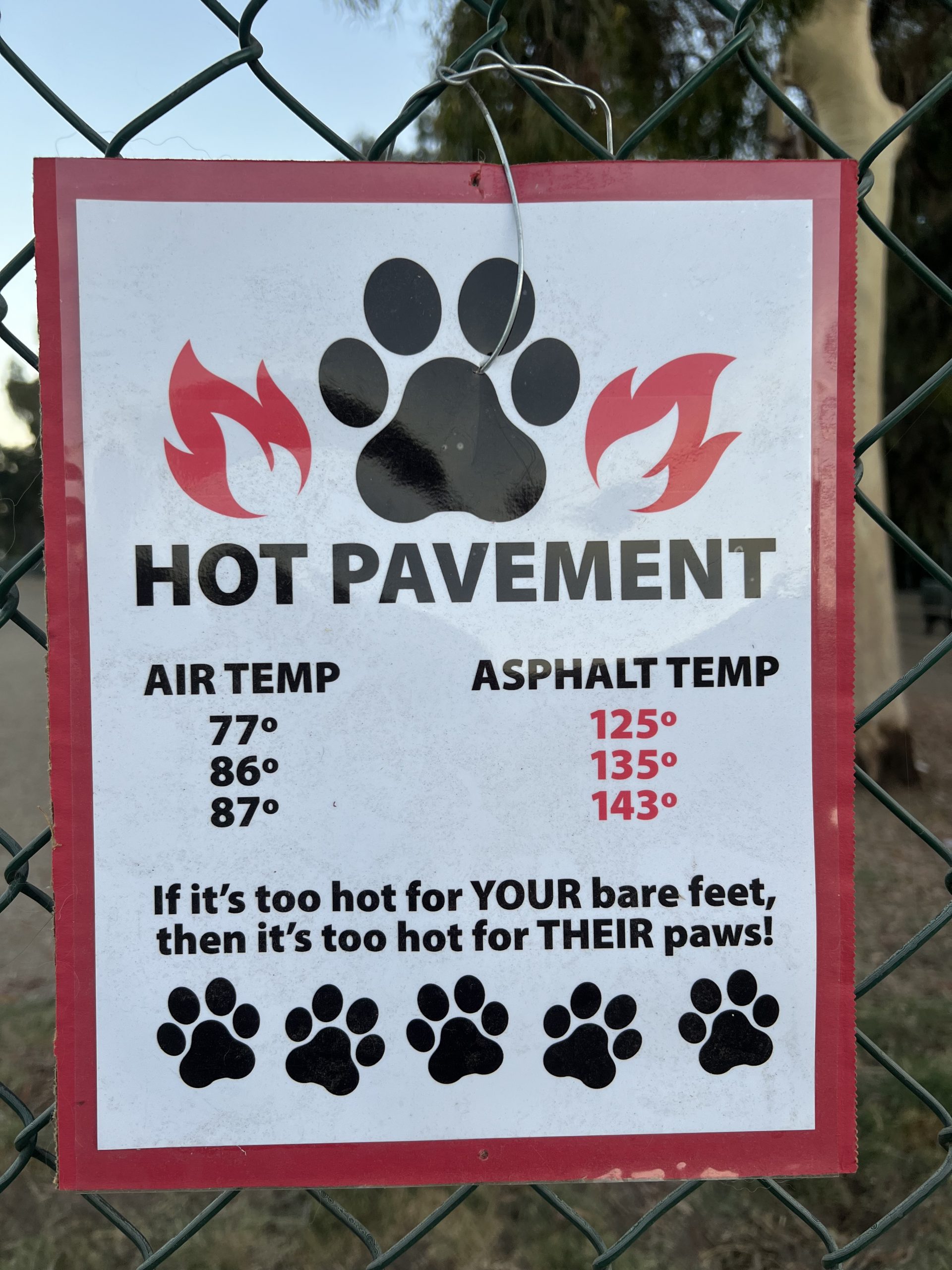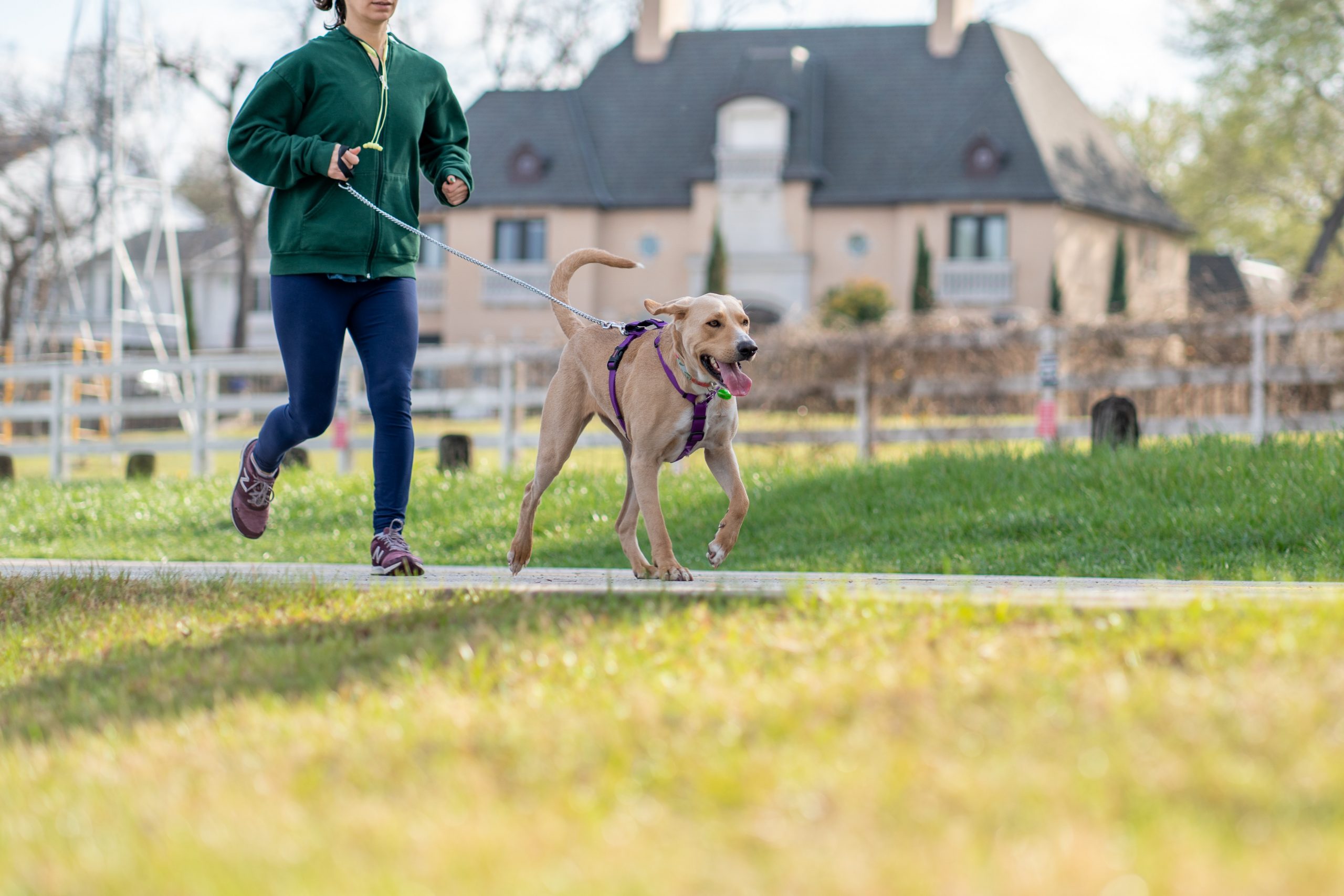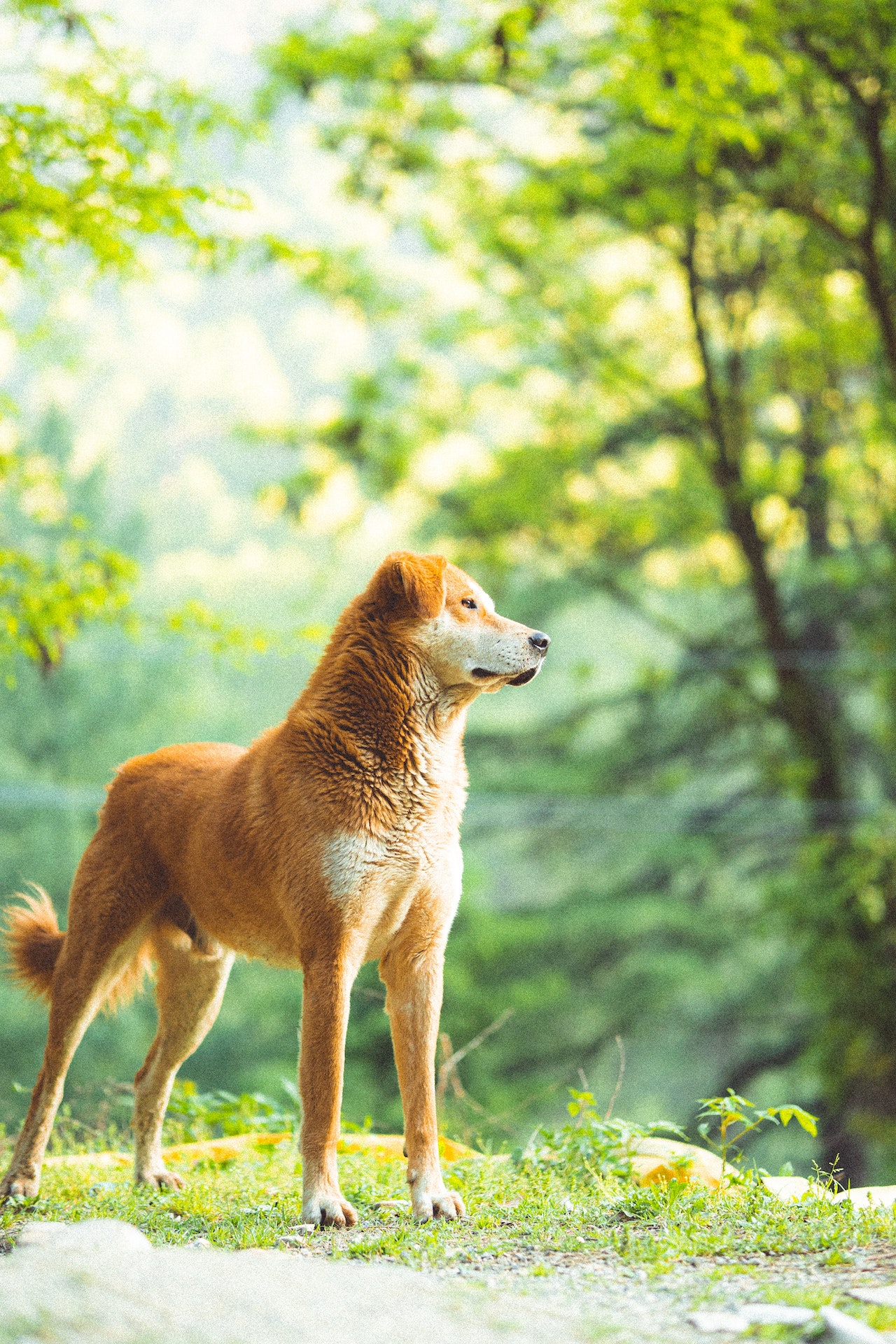Hot Pavement and Dog Paws

As the sun beats down on a scorching summer day, we often forget that our beloved canine companions experience the same heat, and their paws are particularly vulnerable to hot pavement. While we slip on shoes or flip-flops to protect our feet, our furry friends have to endure the burning sensation of walking on sizzling surfaces. In this article, we'll delve into the hazards of letting your dog walk on hot pavement, the impact of the sun's heat on the pavement, how to identify burnt paw pads, and essential tips to care for your dog's paws.
Hazards of Hot Pavement for Dogs: Hot pavement poses significant dangers to dogs' paw pads. Canines rely on their paws to explore and interact with their environment, making them susceptible to the extreme temperatures of pavement. The high heat can cause severe burns, leading to painful blisters and discomfort for your furry friend. Additionally, prolonged exposure to hot surfaces can also result in heatstroke, dehydration, and exhaustion in dogs.
Temperature of the Sun's Heat on Pavement: During peak summer, the temperature of the sun's heat on pavement can become scorching. On a typical sunny day, asphalt and concrete can reach temperatures between 120 to 150 degrees Fahrenheit (49 to 66 degrees Celsius). These temperatures are significantly higher than the air temperature, making the ground unbearable for both human feet and canine paws.
Identifying Burnt Paw Pads: Recognizing burnt paw pads is crucial for timely intervention. Some common signs include:
- Limping or favoring one paw over the others.
- Reluctance to walk or stand on hard surfaces.
- Excessive licking or biting of the paws.
- Visible blisters, redness, or charring on paw pads.
Caring for Your Dog's Paw Pads: If you suspect your dog's paw pads have been burnt, follow these steps to provide immediate care:
- Move your dog to a cooler, shaded area to prevent further exposure to hot pavement.
- Gently clean the affected paws with cool water and a mild antiseptic solution.
- Refrain from popping blisters, as this can lead to infections.
- Apply an over-the-counter antibiotic ointment and cover the paws with clean, breathable bandages.
- Contact your veterinarian for further guidance and evaluation.
Air Temperature vs. Pavement Temperature: Understanding the relationship between air temperature and pavement temperature is crucial for ensuring your dog's safety. As a general rule of thumb, if the air temperature is around 77 degrees Fahrenheit (25 degrees Celsius), the pavement temperature can exceed 125 degrees Fahrenheit (52 degrees Celsius). A simple test is to place the back of your hand on the pavement for a few seconds – if it's too hot for you, it's too hot for your dog.
Summary and Recommendations: Protecting your dog's paws from hot pavement is a vital responsibility for every pet owner. Here's a summary of essential recommendations and preventative measures:
Avoid Walking During Peak Heat: Schedule walks during cooler parts of the day, such as early morning or late evening, to minimize exposure to hot pavement.
Use Paw Protection: Invest in dog booties or paw wax to shield your dog's paws from the heat. Ensure the booties fit properly and are breathable.
Stay on Grass or Shaded Areas: Opt for walking your dog on grassy or shaded surfaces, which tend to be cooler and gentler on their paws.
Check Pavement Temperature: Always check the pavement temperature with your hand before allowing your dog to step on it.
Stay Hydrated: Bring water along for both you and your dog to stay hydrated during walks.
Monitor Your Dog's Behavior: Keep a close eye on your dog's paws and behavior during walks. If you notice any signs of discomfort, stop immediately and seek shelter.
In Conclusion: Being mindful of hot pavement and its impact on dogs' paws is essential to ensure your furry friend's safety and well-being. By taking preventative measures and closely monitoring your dog during walks, you can protect them from the hazards of scorching pavement and enjoy worry-free adventures together. Remember, a little care goes a long way in keeping your dog happy and healthy during the dog days of summer.
Leave a Reply
You must be logged in to post a comment.


